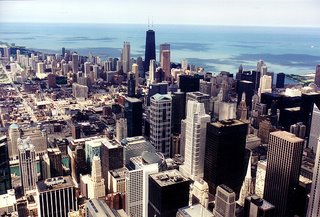Chicago, one of my favorite cities, offers a glittering cityscape at night and architectural splendors by day. Here’s my pick for how to spend one day eating and taking in the view.
Breakfast: McDonald’s at Chicago Place
This pick may come as a surprise, but it is undoubtedly the best view per dollar spent in Chicago. Chicago Place is a vertical shopping mall located at 700 N. Michigan Avenue. Head to the tenth floor and find the food court. It doesn’t look like much – look for the large dining room hidden past the counter. Floor to ceiling windows offer sweeping views down Michigan Avenue towards Tribune Tower and the bridge – the people eating in the food court don’t even know this view exists. McMuffin eating at its best.
Lunch: The Signature Room at the 95th
The highest restaurant in the country, on the 95th and 96th floors of the John Hancock Center. The food is quite good, although some critics grouse that it doesn’t live up to the prices. While that may be true at dinner time, lunch is a bargain, with most entrees priced $15 or less. The service is polished and the views are jaw-dropping. If you want to see the view by night, try their bar on the 96th floor. It’s a much more civilized way to take in the view than the public observation deck two floors below. For about the same price Joe Tourist pays for the observation deck, you can enjoy a signature martini in the swank surroundings.
Dinner: Everest
Chef Jean Joho has created one of the world’s best restaurants in a setting with incredible views. Located on the 40th floor of the Chicago Stock Exchange Building you can enjoy a seasonal menu of local ingredients filtered through the sensibility of the chef’s Alsatian roots. It isn’t cheap, but you get what you pay for – it’s worth every penny. Savor the Roasted Maine Lobster in Alsace Gewurztraminer Butter and Ginger as you end the day here, high above the sparkling lights and remember perhaps, your breakfast McMuffin.
Photo Credit: Kevin P. Martin




